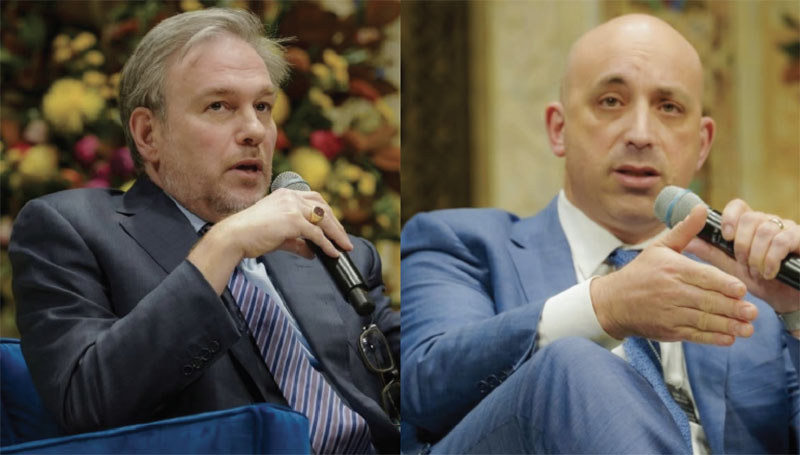Allies or adversaries? That is the question confronting Jewish and Latino political leaders as they assess the current and future relations of their communities.
Some legislators, such as Assemblyman Robert Hertzberg, D-Van Nuys, disagree that Jews and Latinos are at cross purposes politically. Hertzberg points to elected officials such as Los Angeles County Supervisor Gloria Molina, a Latino who drew substantial support from the Jewish community.
“The issues that mean so much to Jews, such as education, resonate with Latinos,” Hertzberg said. “I think they see we have a common heritage as immigrants and in places like Boyle Heights, although we don’t live and work and socialize together as much as we have in the past.”
According to statistics from the Los Angeles County Children’s Planning Council, Latinos make up more than one-third of the population of the San Fernando Valley, versus 20 percent of the Westside area (including Santa Monica and West Los Angeles). Most Valley Latinos reside in the area’s northeastern region, including San Fernando and Pacoima, while the Valley Jewish population continues its shift westward.
On the economic front, statistics from the recent Jewish Federation demographic study show a median household income of $52,000 for Jewish families, while the median household income for Latinos as of 1990 was just more than $27,000 (according to a county profile). The county profile also shows 53.5 percent of Latinos employed either in sales/clerical positions or as operators or laborers, with about 11 percent employed in the professions; more than half of Los Angeles Jews hold professional occupations.
Then there is the language disparity. For many Latino immigrants, such as Mary Ballesteros of La Opinion newspaper (who moved to the Southland just eight years ago), Spanish remains their primary language. Thus, Jews — at least those who cannot speak Spanish — and Latinos find themselves communicating at a basic level, if at all.
A few organizations, such as VOICE (an immigration assistance and citizen education group) and the Valley Interfaith Council (VIC), have long worked at bridging the communication gap between Jews, Latinos and other minorities.
“Jews have successfully transitioned from being outsiders to being leaders in government and business,” said Scott Svonkin, a member of the VIC and chair of the Jewish Federation/Valley Alliance Jewish Community Relations Committee (JCRC). “We have a wealth of experience to share, and it is in our best interest as a minority to help the Latino community succeed by forging a genuine partnership with them.”
“The relationship [between Jews and Latinos] is relatively new, and it doesn’t come from the same place, historically, as black-Jewish relations,” said Barbara Creme, director of the Valley JCRC. “We need to approach this from a different perspective and realize it takes time. The black-Jewish relationship took time to evolve, too, and I think the biggest problem we face is people’s lack of patience.”
To help develop and nurture the Jewish-Latino relationship, Creme last year created the Hispanic Jewish Women’s Task Force with the assistance of Margaret Pontius, community services coordinator of the Guadalupe Center in Canoga Park; Virginia Rafelson of Los Angeles BASE (Basic Adult Spanish Education); and Rayna Gabin, field deputy for City Councilwoman Laura Chick.
Pontius, who supervises a wide range of social-service programs at the Guadalupe Center, said that she found it interesting to compare the different perceptions each group has of the other.
“In the Hispanic community, everything depends on class; they tend to see everyone who is not black or Hispanic as rich and, therefore, don’t want to have anything to do with us,” she said. “I don’t think Jews have an accurate picture, either; they think all Latinos are like their cleaning lady, that they don’t have degrees or are professionals, they don’t care about their kids going to good schools or about art or travel. Both sides tend to lump people together unfairly.
“This group [the task force] has been a real eye-opener for all of us. After a time, each side sees we have the same problems with teen-agers or aging parents or even domestic violence. At that point, it begins to be about women sharing, not Jewish women or Hispanic women or Asian women, but just women.”






















 More news and opinions than at a Shabbat dinner, right in your inbox.
More news and opinions than at a Shabbat dinner, right in your inbox.